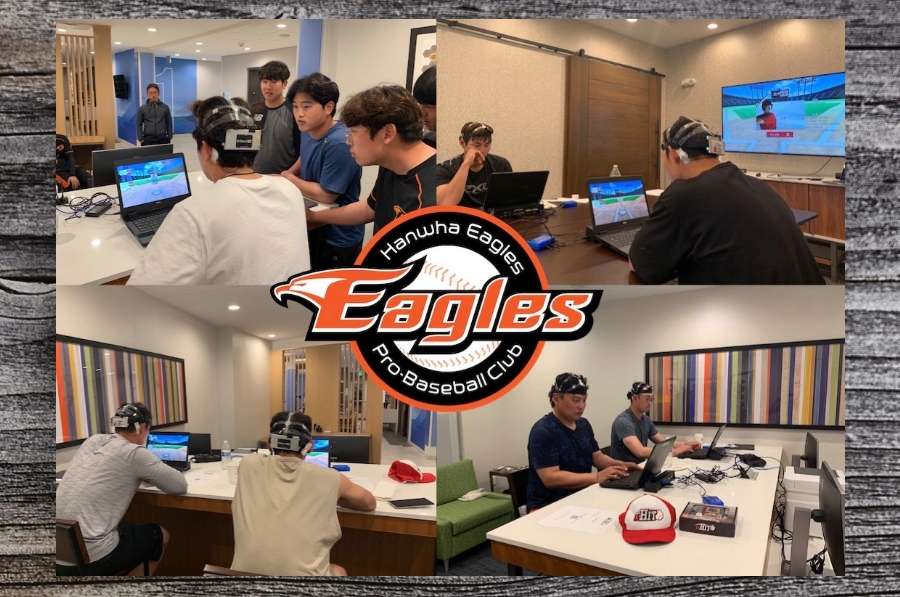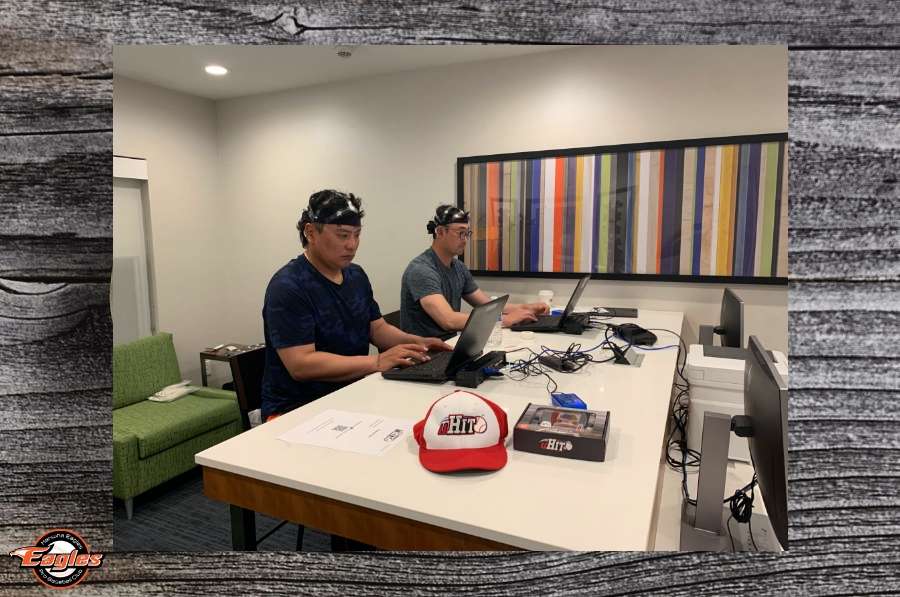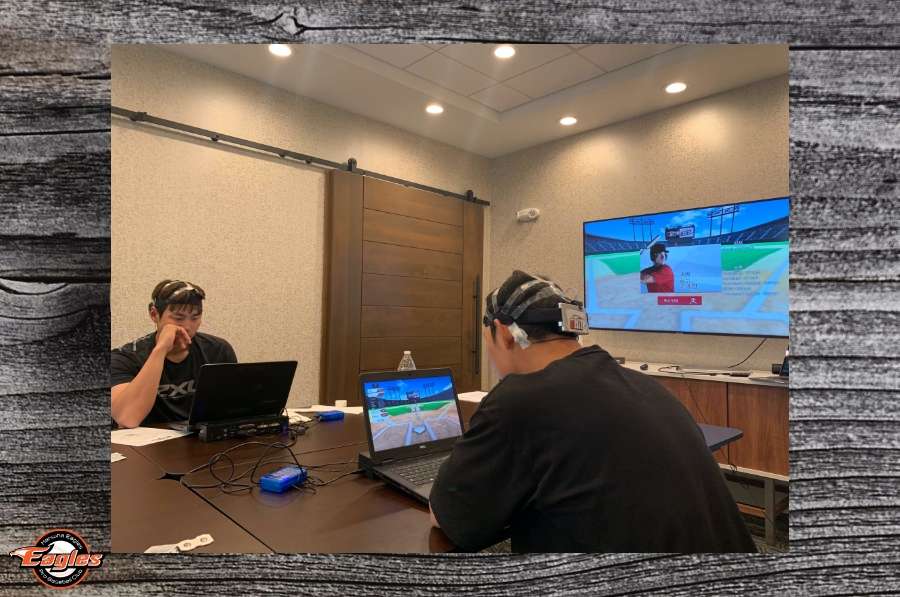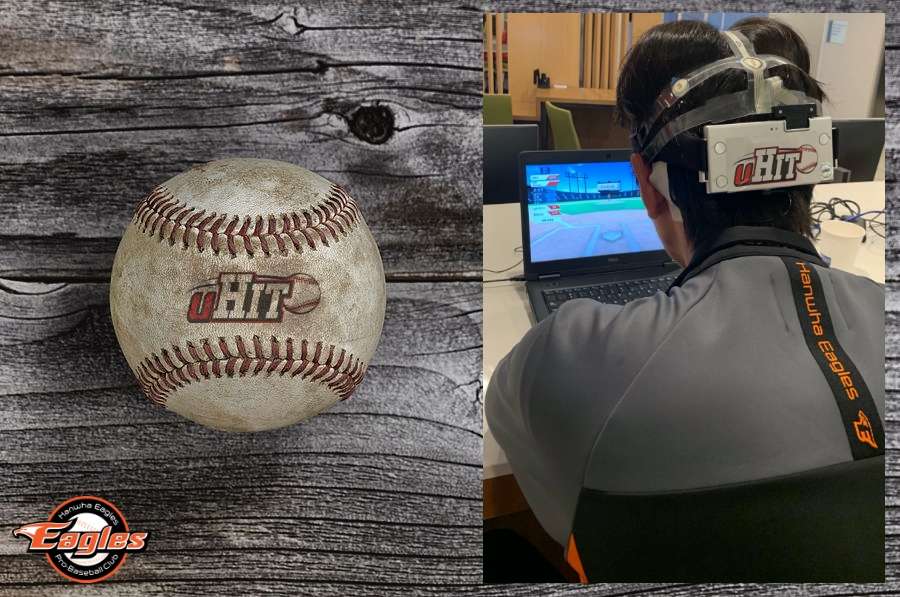Professional uHIT Team Case Study
Rebuilding A Team Hitting Philosophy
Hanwha Eagles from 2019 – 2020
Using uHIT to make better swing decisions. Differentiate strengths & weaknesses.
February 26, 2021
Team Hitting Development | Player Development
The Hanwha Eagles: A member of the Korean Baseball League
Hanwha began using uHIT in Winter 2020 with a goal of revamping a hitting philosophy that would help score more runs in the upcoming season.
For their team hitting philosophy, they wanted to break down how teams improve their run scoring total by focusing on both batted ball and plate discipline criteria . They focused on increasing the team’s contact rate and quality of contact (i.e., Barrel Rate), including strikeout (k%) and walk (BB%) rates.
How did a professional team improve these criteria in one season?
We started everyone with the Professional Assessment using direct brain measurement (see pictures). Then we used that roadmap to start fine-tuning their Pitch Recognition.
Team Contact Rate
uHIT will not work just because you download the app. It must be used. The more pitches a player decides on in uHIT, the more often he gets feedback of how well he’s seeing the ball.
We examined how success at seeing the ball in uHIT connected to the success measured by contact rate on the field. With Hanwha, we focused on pitches worked in our Pitch Recognition training modules.
The more uHIT pitches decided on in the app, the more in game contact the individual players made.
We split the Hanwha hitters into those players that worked 800 or more pitches in uHIT (Group 1), and those who worked less than 400 uHIT pitches (Group 2).
The Hanwha players below 400 uHIT pitches saw their contact rates decrease (by -3%), while those above 800 uHIT pitches saw the opposite (by +5%).
Barrel Rate
One of the Hanwha Eagles’ goals for 2020 was to increase the team’s amount of extra-base hits.
To track the amount of extra-base hits, we kept track of quality of contact via the Barrel Rate.
As we saw with contact rate, the number of uHIT pitches worked also correlated directly to an increase in Barrel Rate. The players that worked the most uHIT pitches (in Pitch Recognition, again) had the biggest increase in Barrel Rate from 2019 to 2020.
Barrel Rate is a great barometer for connecting pitch recognition ability to swing mechanics because it requires both skills simultaneously. How is it defined exactly?
Barrel Rate = A combination of exit velocity and launch angle that has led to a minimum Batting Average of .500 and minimum SLG% of 1.500 over the past 5 seasons
Again, we split the Hanwha hitters into groups by how many uHIT Pitches they worked. One group averaged 607 uHIT Pitches (Group 1) and then the other averaged 516 (Group 2).
Group 1 hitters increased their Barrel Rates by +1.8%, while Group 2 hitters went down (-0.9%) from the previous season.
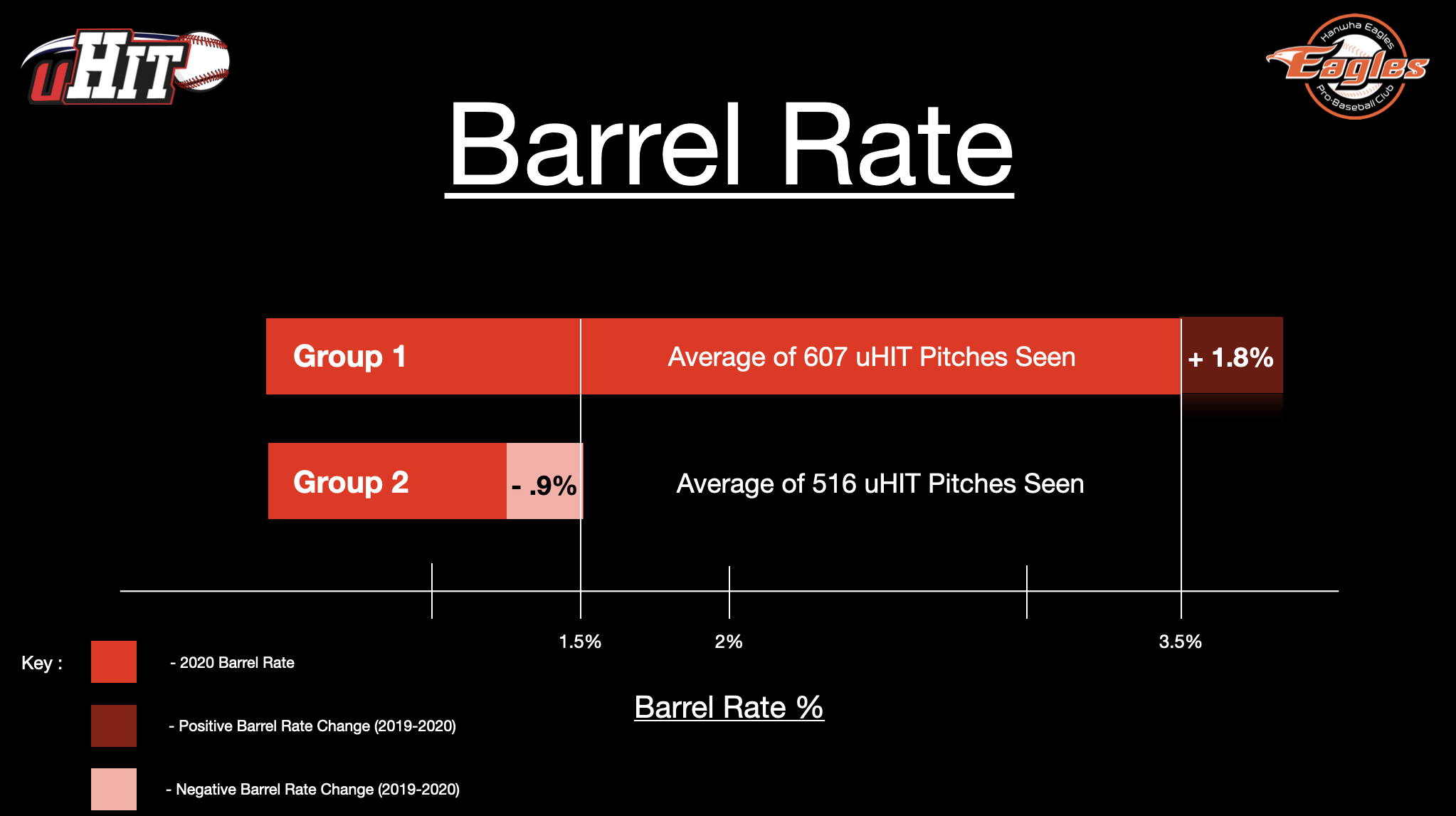
uHIT Custom Training
Case Study: Player #1
uHIT Custom Training is a program based on your own performance in uHIT. It adapts what types of pitches, how fast and where they are thrown to incrementally make you better at deciding on the pitches. uHIT Custom hones player development for better recognizing pitch types, areas of the strike zone and improving reaction times.
Player 1 for Hanwha worked over 2000 pitches of uHIT’s Custom Training, leading to these results:
-
Contact Rate increase of +7% (team high)
-
Barrel Rate increase of +5% (team high)
-
Walk Rate increase (+2.8%) from 5.7% in 2019 (without uHIT) to 8.5% in 2020 (with uHIT).
-
Strikeout Rate decrease (-5%) from 35% in 2019 (without uHIT) to 30% in 2020 (with uHIT).
Here, uHIT Custom proved to provide the basis of a well rounded hitter’s player development strategy. Both contact and quality of contact rates (barrel rate) improved from 2019 to 2020, as well as plate discipline metrics, increasing a walk rate (BB%) while decreasing a strikeout rate (k%).
2021 Update: This player was his team leader in HR (18) and OPS (.852)
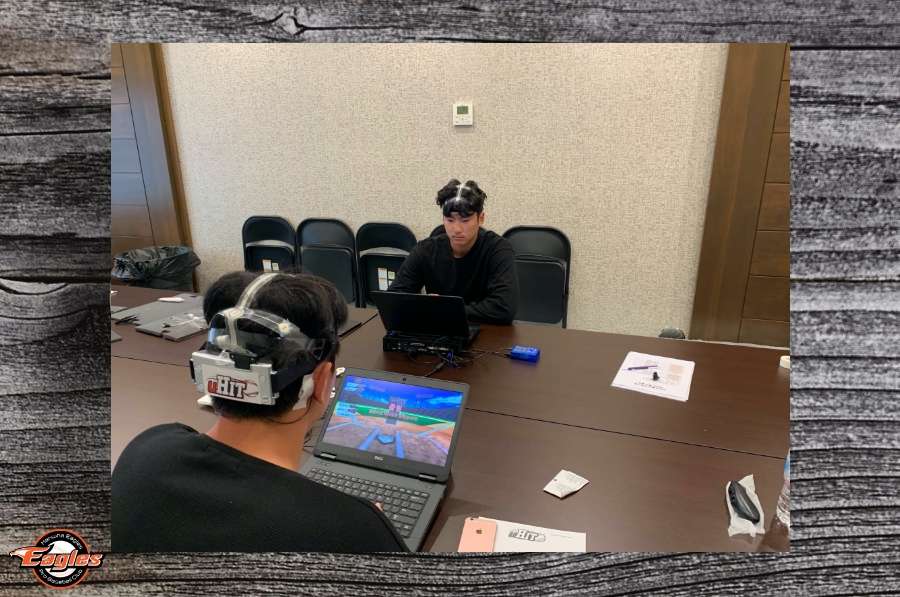
uHIT Game Day Prep
Case Study: Player #2
uHIT Gameday Prep is a tool available to professional players only. It allows them to see opposing pitchers’ repertoires before the game. Hanwha hitters used Gameday Prep either as an alternative or a supplement to batting practice, (Per a team rule, Gameday Prep was available to Hanwha players during HOME GAMES ONLY). The idea of Gameday Prep is to maximize swing efficiency and the number of hard hit batted balls per swing. It’s simple logic really: if you know the pitcher’s repertoire before you go up to the plate then you’ll be able to hit the ball harder and reach the ball more efficiently – like hitting off a tee. In this case study, the most significant difference we found was in team batting average for home vs. road games.
Player 2 for Hanwha worked over 1600 pitches of uHIT’s Gameday Prep. He provides the best sample size and therefore the best example on the team of how Gameday Prep can make a difference on the field:
-
Home Batting AVG. .286 | Road Batting AVG. .197 (shown below)
-
Home Strikeouts – 15 | Road Strikeouts – 19 (not shown here)
Player 2 also saw a cumulative effect of using Gameday Prep over the season. As with other players, we could measure this by comparing contact and barrel rates between the 1st and 2nd halves of the season:
-
Increased contact rate from 1st to 2nd half of the 2020 season (not shown)
-
Increased barrel rate from 1st to 2nd half of the 2020 season (not shown)


